7 Wonders of Modern World
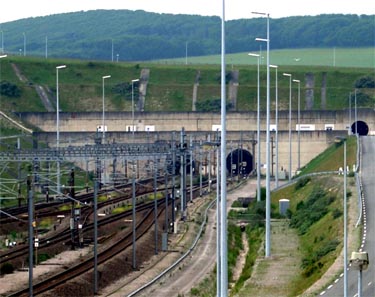
1. Channel Tunnel
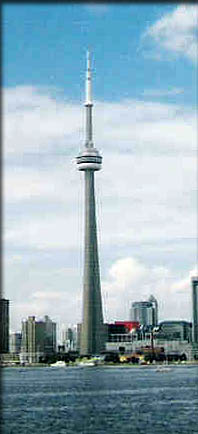
2. CN Tower
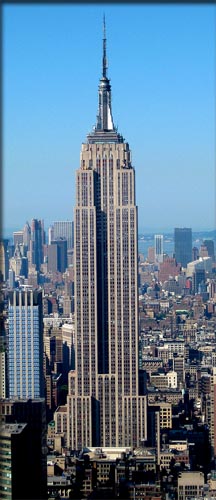
3. The Empire State Building

4. The Golden Bridge
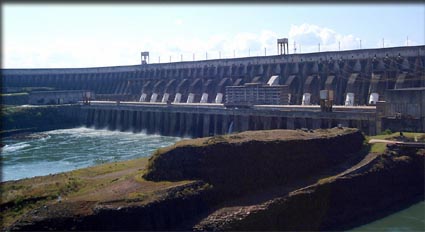
5. The Itaipu
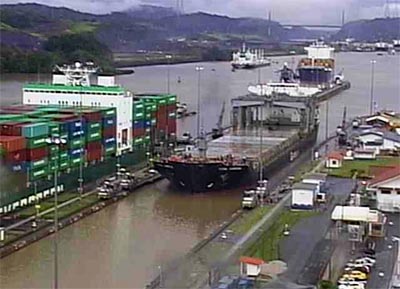
6. Panama Canal
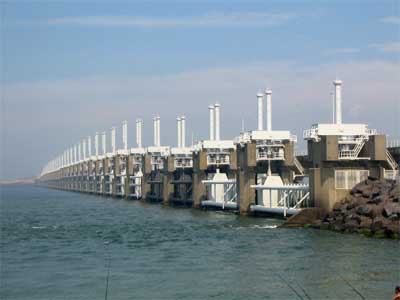
7. Netherland North Sea Protection Works.



1. Channel Tunnel
In 1802 a French mining engineer named Albert Mathieu had a wonderful idea. After years of war between France and England the two European powers were finally at peace. Suppose one took advantage of this reconciliation to forge a permanent tie involving the two nations? Not just an effort to create goodwill between the two, longtime rivals, but a project that would physically link the two countries together. Something that would give them a way to move people and goods across the 20 miles of water of the English Channel without relying on the small, erratic ferries that made passengers seasick as they were knocked about by the unpredictable waves.What if one connected the two great nations together using an underground tunnel?
Mathieu presented his idea to the then current ruler of France, Napoleon. Unfortunately for Mathieu the "Peace of Amiens" lasted only a year and his idea was soon forgotten, but only after being ridiculed by the British Press in a cartoon showing French troops invading England via balloons and a tunnel.

2. CN Tower
In the 1960's the city of Toronto, Canada, was in a building boom. The town, which had consisted for many years as mostly smaller buildings, was erecting a number of new skyscrapers which rose towards the heavens. While this made the skyline of the city exciting to look at, it also caused some problems, too. The new, tall buildings blocked TV and radio communications as well as the microwave transmissions used to move data between many businesses. To resolve this problem the Canadian National Railway (CN) decided to build a communications tower tall enough so that any radio or TV communications from it would not be obstructed by other high-rise buildings in the city.
The tower would also serve as a hub for microwave transmissions, allowing two businesses that were not visible to each other to exchange data by having the tower retransmit it. The project officially got underway in 1972. During the planning stage it was decided to add an observation deck. Engineers soon realized that with some fairly minor changes to the project, the structure could be turned into the tallest tower in the world.

3. The Empire State Building
The beginning of the 20th century was marked by a boom of building activity in the city of New York. Buildings were constructed and then demolished only a few years later to make room for larger buildings. Companies vied for the honor of having their name on the tallest building in not only the city, but the world. The skyline of the metropolis became its pride, crowned with an array of skyscrapers, each one different than the one before it.
In their race to have their name on the tallest building, developers would even resort to trickery. In 1930 the Bank of Manhattan skyscraper was completed. It stood 135 feet taller than the older Woolworth building and two feet higher than the planned height of a rival project, the Chrysler Building, which was still under construction. The architect of the Chrysler building, William Van Alen, however, had a 185 foot-long spire secretly assembled inside the building. At the end of construction on October 23, 1929, the spire was hoisted into place and in only 90 minutes the Chrysler building usurped the Bank of Manhattan for the title of tallest building in the world.

4. The Golden Bridge
The strait that connects the Pacific Ocean with the San Francisco Bay is one of the most unforgiving stretches of water in the world. It is 6,700 ft (2,042 m) wide and in the center 500 ft (150 m) deep. Because of the tides moving in and out of the bay the water is subject to strong, swirling currents. Sometimes as the air is forced between the high hills on either side (which is called the "gate"), heavy, gusting winds result that can move as fast as 75 miles per hour. When the wind drops, the area is also often shrouded in heavy fog with near zero visibility. In 1916, because of these factors, San Francisco's city engineer, Michael M. O'Shaughnessy, estimated that a bridge to span the strait would cost $100 million to construct, an incredible amount of money for that period of time.

5. The Itaipu
In the 1960's the governments of Brazil and Paraguay saw a way of working together on a project that used one of their shared resources to support the expanding electrical needs of their countries. This resource was the Paraná River, the seventh largest in the world, which formed a natural border between the two nations. The project was a massive dam that would harness the river's energy and turn it into electrical power.
On July 22, 1966, the Brazilian and Paraguayan Ministers of Foreign Affairs signed a document agreeing to explore the possibility of building a dam and an associated hydroelectric plant. It wasn't until February 1971, however, that the work actually started. Once construction was underway, there were still legal considerations to be handled. In particular, the country of Argentina, only a few miles south of the dam site, was concerned that in times of conflict the dam could be used as a weapon. If all the gates were opened, a rush of water could be created that would flood the Argentine capital of Buenos Aires. To quell these concerns the three nations entered an agreement in October of 1979 on the amount of water that could be released at any time from the dam.

6. Panama Canal
Charles the 5th, the Holy Roman Emperor and King of Spain, had a problem. A few years before in 1532 Francisco Pizarro, a Spanish conquistador, had defeated and captured the Inca Empire in Peru. The mines of that country were now producing a wealth in silver to be sent back to Spain, but the trip required ships to travel thousands of miles all the way around the tip of South America before they could make their way eastward across the Atlantic Ocean to Europe. The king pondered if perhaps there wasn't a better way.
In 1513 Vasco Nuñez de Balboa had discovered that in Central America there was just a narrow strip of land, not much more than 50 miles (80km) wide, separating the Atlantic from the Pacific Ocean. Suppose a canal could be dug through that strip of land? It would not only shorten the trip from Peru for the Spanish vessels, it would give Spain a tactical military advantage against its rival in the new world, Portugal.
Though the distance was only fifty miles it was one of the most difficult landscapes imaginable to work in combining dense jungles with steep mountains. King Charles ordered the Panama regional governor to survey the area for a canal following the route of the Chagres River. The governor came to the conclusion, however, that building such a passageway through the rugged terrain would be impossible.

7. Netherland North Sea Protection Works.
When people think of the Netherlands two things often come to mind: Tulips and windmills. Both of these have been symbols of this European country for centuries. The tulip was introduced from Asia in the 17th century and has been a source of income for Dutch farmers ever since. The windmills date from the 1400's and though they are picturesque, they are actually symbols of a serious life and death struggle that has raged in the Netherlands for years: The Dutch people and their land against the sea.
The most recent of these battles took place in the 20th century when the Dutch engaged in two massive projects to enlarge and secure their land against the ocean. The Zuiderzee Works and the Delta Works took most of the century to complete and together are considered one of the Seven Wonders of the Modern World.


BabyNurul Ain





No comments:
Post a Comment